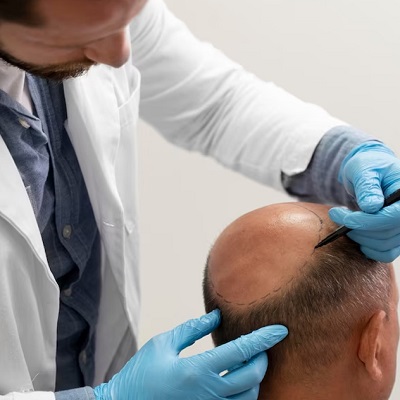
Look at men and some women. Once you are born, you head to adult life with thinning hair, receding hairline, or total male pattern baldness. Who are the “bad guys” of hair loss? Genes, hormones, environmental stress and myriad unknowns. Reliable solutions? Little or no, the new class of hair transplant procedures and even digital technology applications, such as laser restoration, offer thick possibilities.
Get a truly natural look – limitations of older hair taking techniques. Earlier hair-setting technologies have provided the hair at a bald spot. However, the look can do more harm than good when the hair starts to push at opposite angles, or so to be noticed easily and embarrassingly.
Follicular transplant for a smooth and subtle appearance:
In spite of the hair and bristles of hair on the body and its consequences, the wealthy contemporary men and women of the twenty-first century are undergoing a hair transplant that rivals Mother Nature.
Exploit cycles of natural hair growth:
Hair, by its nature, grows in cycles or phases. At any one time, about 10% or more of your hair is “resting,” dormant and not growing. The follicles, all rich, strong and elastic during youth naturally lose their youthfulness of living, the more the follicles shrink and fall.
Harvest of tiny natural “units” with three follicles:
The hair naturally falls into combinations of single or multiple follicles. So, if you want a natural look, the follicular unit graft is as close to nature as the restoration can get from it.
What improves the success rates of hair restoration surgery?
Overall, patient health, stress reduction proactively intervening at the first signs of hair loss in women or signs of male pattern baldness, genetics, age and hormonal levels all play a role in the determination.
Sex hormones, age and hair restoration:
For many men, “maturity” is not limited to mortgage payments, children’s football games and retirement planning. Science is discovering that hair loss reflects the wonderful hormonal complexity of the human body.
New Hair Growth Technology – Low Laser Light Therapy. The laser, when applied to a hair transplant islamabad operation, creates a controlled incision and seal of the hair transplant area. Curiously, at low intensity and in the right energy frequencies, low light laser therapy also shows therapeutic potential for hair growth, where targeted low-intensity laser light can be emitted at an angle of follicle depth. Results? Although it is not conclusive and cannot be translated to everyone, low-intensity laser light therapy offers interesting perspectives and possibilities of adaptation in the future.
Have you noticed how many hair loss restoration methods have changed over the years?
There has been a lot of progress in this area in recent years. The use of natural ingredients is one of the most promising discoveries. Research shows that natural ingredients can have a significant impact on fine hair.
With the wide range of current remedies, many people find a solution to their hair loss. The wonderful part is that they are not so expensive. When you are looking for natural ingredients that are suitable for restoring hair loss, you will find several. Finding the right combination is essential.
Where do you find the right ones for your personal hair loss? This is where research comes into play. You must find out what is causing your hair loss before you can find the right treatment. This can be just a question of visiting your doctor.
However, the research you do in your particular situation will help you understand why some ingredients are effective. The important thing is that they work. The hair has stages that it goes through. When these steps are interrupted by something, it can cause hair loss.
[HorizonForm]



